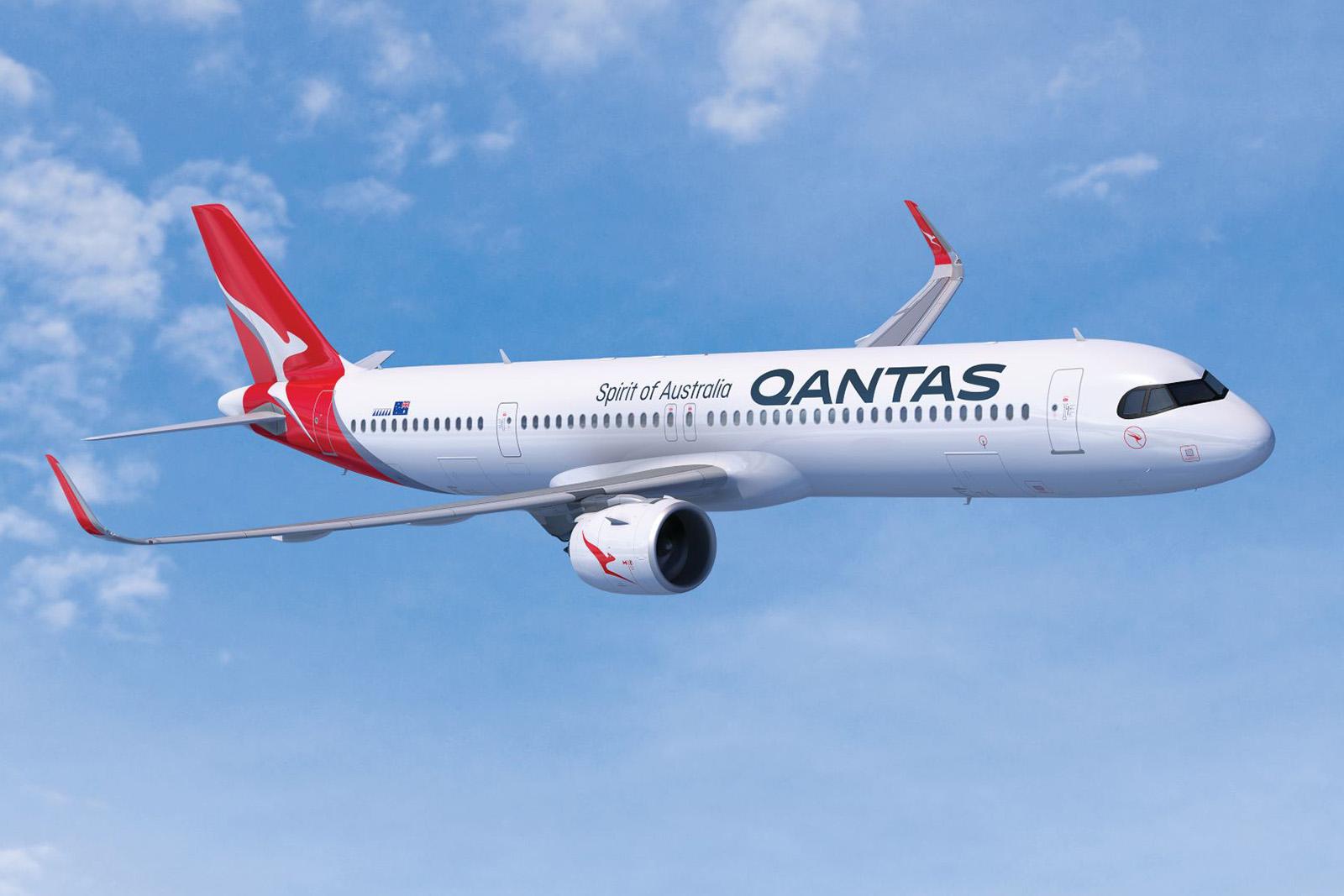
SINGAPORE—Buoyed by last December’s landmark Airbus win at Qantas Airways for Pratt & Whitney-powered A220 and A320neo-family aircraft, the engine-maker is aiming for a growing share of the Asia-Pacific single-aisle market that continues to generate orders despite the ongoing effects of the COVID-19 pandemic.
The Qantas agreement, which covered up to 134 A320neo-family and A220 aircraft to replace the Boeing 737s and 717s in the airline’s domestic system, was a significant U-turn for the formerly long-term loyal Boeing and CFM operator. “Qantas went in with a very open mind and they ran a very rigorous and disciplined campaign,” says Mary Ellen Jones, who leads Asia-Pacific commercial engine sales for Pratt & Whitney.
“They were very clear on their requirements, and we did our best to meet those. The A220s go first and are due to begin deliveries in the latter part of 2023, and the Neos follow in 2024,” says Jones, who adds that the sales campaign leveraged the support and commonality benefits of the two PW1000G geared turbofan (GTF)-family-powered aircraft series. “It gives operators flexibility. If they were to pair up with an A220 and a Neo—or an Embraer E2 and a Neo for that matter—they cover all of those thrust requirements. Dealing with one engine original equipment manufacturer might make life a little easier for an airline.”
The upcoming availability of the upgraded PW1100G Advantage will also boost market potential in the Asia-Pacific region, Jones says. The engine will be rated up to 34,000 lb. of thrust, making it the most powerful option available on the Airbus A320neo family from its targeted debut of January 2024 onward. Incorporating a set of materials, design and airflow upgrades in the low- and high-pressure spools, the Advantage will also be compatible with 100% sustainable aviation fuel (SAF) at entry into service.
Representing the first significant refresh of the core since certification testing of the production-standard PW1100G began in 2012, the Advantage is expected to increase Pratt’s market share of the A320neo family—particularly the longer-range A321XLR. Airbus is on track to deliver the first of these in 2023 and has already secured firm commitments for more than 500—many of which have yet to be allocated an engine choice between the GTF and CFM’s competing Leap 1A.
“We do see it giving us a leg [up] in what is a very competitive market,” says Jones. “You get that extra fuel burn, which is always huge as well as that commensurate reduction in CO2 emissions, which is also an increasing focus in the region. It also produces additional thrust and the ability to tackle some of those hot-and-high airports with no impact to engine durability. It just gives operators a lot of flexibility, maybe the ability to handle more payload or get some longer range and try out some routes.”
The changing dynamics of a post-COVID market may also favor the company’s position—particularly on the A321neo family, says Jones. “For all the pain that COVID has caused, the buying really hasn’t slowed down that much. The low-cost carriers have been a big part of the demand and anywhere where you have domestic markets you see that. With the A321 it gives airlines the ability to back off maybe from a widebody and put a smaller airplane on some of those thinner routes, or even as you start to recover from COVID and you don’t want to overcommit.”
Strengthened by the availability of the Advantage, the popularity of the Neo family and the ability to pair up fleet replacement campaigns with the A220 and Embraer E2 series, Pratt therefore sees the Asia-Pacific as a market ripe for expansion through the rest of the 2020s. “Once we get through the pandemic we think the growth will continue,” Jones says. “I think over the next 10 years there will be a demand for about 8000 aircraft in the greater Asia-Pacific and China region. The vast majority—about two-thirds—will be single-aisles, which is where we would play well, and we’d like to get our fair share of that. So, we remain very bullish, very optimistic and very focused on Asia-Pacific,” she adds.
